 Ethiopian Airline has been growing fast since 2005. During the past seven years the airline grew sevenfold.
Ethiopian Airline has been growing fast since 2005. During the past seven years the airline grew sevenfold.
The national flag carrier is opening a number of new destinations and acquiring modern jetliners, including the Boeing 787 Dreamliner and B777s. However, the road has never been a bed of roses for the airline. Kaleyesus Bekele of The Reporter sat down with the CEO of the airline, Tewolde Gebremaraim, at his office and discussed the growth of the airline and the challenges facing the management.
The Reporter: Tell us about the current status of Ethiopian Airlines.
Tewolde Gebremariam: As you know we are in the middle of the implementation Vision 2025 (a 15-year growth plan). The plan was considered by many to be a very ambitious one. It is a scaled-up growth plan. We started it in the fiscal year 2010-2011 and now we are in the fourth fiscal year. When we initiated Vision 2025, many people within the company and outside, including media people, said it was very ambitious. And, it is true that it is very ambitious. But making a thorough analysis of the environment and the capability of the airline, we believed that it is achievable and should be achieved. The growth plan is very necessary for Ethiopian Airlines. People ask if it was realistic and if it was achievable. Many people say that it is a very fast growth. I think these are valid and good concerns. But when you view the airline industry in general it is a very capital-and labor-intensive industry. As a result of a high proportion of fixed capital and labor intensity, the airline industry is always driven by volume. Volume matters. Scale matters. And size matters in the airline industry because it is all about economics of scale. So if you have the critical minimum mass in terms of size the fixed cost is absorbed by a larger volume of output, therefore your unit cost comes down. This is the rule that governs the industry. That is the reason why every airline, as much as possible, wants to grow. In terms of fleet you need the minimum number and composition of fleets to make the economics of scale in terms of operation and of the number of passengers. This is the very reason why we developed fast, sustainable and profitable strategy. It is the right strategy and it is proved right. And now four years into it we have ascertained and proved that it was the right strategy and is achievable.
Let me give you some figures to show where we are today. In terms of revenue (annual turnover) in 2010, at the end of the fiscal year, the airline was generating 17 billion birr; this year we are going to close around 48 billion birr. This has grown by more than twofold in the last three years. In 2010, we generated a profit of 1.6 billion birr; last year we generated more than two billion birr. If you look at our fleet, we had 36 airplanes in service; today we have 63 aircraft in service. In 2010 we were flying to 59 international destinations, now to 79 destinations. This has shown a tremendous growth. The number of employees increased from 5,500 to 8,000, which does not include temporary employees. This shows you that the airline is growing fast. What makes Ethiopian Airline’s growth unique in the industry is that it is growing fast while making profit. Usually in the industry, when you are growing fast, you do not make profit at all. Look at the gulf carriers. Take Qatar Airlines, for instance. They are fast but they have not been making profit. If you want to grow at a fast rate like 15 and 20 percent, then it is very difficult to make profit. But in our case we are growing fast and the profit is also growing. Today we are the most profitable airline in Africa. That is why Ethiopian Airline’s growth is admired and a topic of discussion all over the world. People in the industry wonder how the airline can grow fast and at the same time continue increasing profit. We now are the fastest growing airline in Africa and also the most profitable one. There are few airlines in Africa that make profit. We are the largest network in Africa. In 2013 we received nine international awards, including the SKYTRAX Award.
In the Vision 2025 plan, we focus on four pillars. The first pillar is fleet. Again in the airline industry, if you do not have the right fleet, it is very challenging. In terms of fleet composition, commonality, fit for the purpose, you have to have the right fleet. If you have too many fleets the cost of operation goes up. If you have very similar fleets then you may not be able to cover your network. For instance, in Ethiopian Airlines we use the Boeing 737 aircraft to serve regional destinations. We also have long haul services like Addis-Washington DC (13 hour non-stop flight) and Beijing. We have defined the fleet size and fleet composition. For short range we use the narrow body B737-800 and -700. On the mid-size we have the B767 and B757; they are gradually replaced by the B787, then on the long-rage wide body, we have B777-200 LR and the B777-300 ER. In 2016 we will start taking delivery of the Airbus 350. The fleet is determined; from now on it will only be a matter of adding numbers.
The second pillar is infrastructure. It is divided into two. The first is the one that we own and control. This is cargo terminal, maintenance hangar, aviation academy and simulators. On this front, we started building one of the largest cargo terminals. The current terminal has a designed capacity of 350,000 tons per annum. The one that we are building now has two phases but when combined it will have the capacity to handle 1.2 million tons of cargo. We have started building the first phase, which will accommodate 600,000 tons of cargo. It will cost us 150 million US dollars.
For the maintenance hangar, we have two versions. The main one is a very large hangar. It has its own paint shop. That will cost us 90 million dollars. We also have a light hangar, which is going to cost us 110 million birr. These two hangars are being built simultaneously as we speak.
We have three simulators. The first simulator is for B757 and B767 pilot training. The second one is the B737 simulator. The third simulator is the Q400. Space is provided for the B787 Dreamliner simulator, which will come next year. The other infrastructure that we are working on is the aviation academy. We have completed the construction of a large building for classrooms. The other building is approaching completion. We have invested about 55 million dollars in the aviation academy expansion project.
Human resource development is the other main pillar. As the airline grows we need more professionals, more pilots, technicians, cabin crew and marketing teams. We are investing in the aviation academy. We increased the intake. In 2010 the intake capacity of the academy was 200 students per year. Today it has an intake capacity of 1000. We are training 1000 professionals per year. That shows that we are employing 1000 people per year. The airline is creating more than 1,000 Ethiopian nationals. We are introducing new technologies like the multi-crew pilot license training program.
The fourth pillar is systems. By systems we mean information and communication technology. ICT is changing the entire way of doing business. We are investing in ICT infrastructure development. We have invested 30 million dollars. Today the airline is 100 percent computerized. In the next six months to a year’s time we will change the airline to a paperless organization. It is going to be fully automated.
The other one is the multi-hub strategy. In Togo we established a regional hub. We have invested in ASKY Airline. ASKY started operations four years ago and is a successful airline. We are replicating ASKY’s success in Malawi. Again, we will replicate that in the DRC.
It is true that the airline is growing fast and this has taken many by surprise. But there are some critics who are skeptical about the fast growth of the airline. They do not deny that the airline is growing but they are saying that it is an unhealthy growth. They say it is growing so fast that the management is putting too much pressure on the employees and is compromising quality and safety. What is your response to this?
I would say first it is a good concern. When we grow at the rate that I told you these types of concerns could arise and they are valid concerns. But we have to measure these concerns with facts and figures. Let us see the parameter. By growing so much, have we compromised quality? The answer is no. We have not compromised quality. If we had compromised quality passengers would not have been travelling with us in big numbers. Our number of passenger is growing 15 to 20 percent every year. From one million passengers in 2005 we increased to 5.6 million last year and six million this year. The number of passengers is growing very fast because they are satisfied with our service. They are loyal to the airline and they like the airline. They are happy with the overall service of the airline. We always do a survey on customer satisfaction. We hand out questionnaires to our customers and collect feedback. Passengers’ feedback show that 87 percent of our passengers are satisfied with our service. This is a very high figure in the airline industry. This does not show you a compromise in quality. Our passengers tell us that our in-flight service is one of the best. Our passengers tell us that our connectivity is one of the best. Today if you are in Abidjan and you want to fly to Beijing, Guangzhou or any other part of China you will not get any better connection than Ethiopian Airline. If you want to fly to China from any part of Africa, it is Ethiopian Airlines that has the fastest and most convenient flights. We have the largest network in China among African airlines. It is the same thing with Washington. Washington-Addis is a direct flight. So our flights are full. Before three years we were flying B767s, which is a 235-seater. Now we have the B777s, a 321-seater and they are full. What does this show you? It shows you that passengers are happy with the quality of service and they are flying with us in large numbers. For the first time in our history, we received SKYTRAX’s best airline staff award. SKYTRAX is a very conservative and credible airline rating company. We received the SKYTRAX best staff service award last June. We received nine awards and most of them are in customer service. It is the customers that vote. All these show you that our service quality is upgraded.
As you know, we joined Star Alliance in 2011. Star Alliance has its own measurement. We have 98 percent compliance in Star Alliance. Star Alliance audits our service every year. For instance, they will come next month to audit us. I am quite sure that the facts and figures I gave to you prove that quality is continuously upgraded.
The other thing you mentioned is safety. For us safety is number one. It is our top priority. We cannot compromise safety for a minute. And, again, if you consider the way we measure safety, including security, we have regulators. These regulators come and audit us. And we pass all audits with flying colors. The USS Federal Aviation Administration audits us as a certified repair station here. FAA audits us every year and we pass to their satisfaction. European Aviation Safety Agency audits us twice. We are working with EASA on certification. Ethiopian has always been audited by FAA. Now EASA gets equal recognition and so we also want to be certified by EASA. The Ethiopian Civil Aviation Authority audits us. They audit us frequently. There is what we call SAFA audit (Safety Assessment of Foreign Airlines). All foreign airlines flying to Europe are inspected. In 2013 we had 27 audits in Paris, London, Frankfurt, Stockholm, Rome etc. We have to make sure that we are up to the European safety standards. If we do not comply we cannot fly to Europe. Every two years we have the IOSA (international operational safety audit). The last one was in the first week of February 2014. In the last three audits we successfully passed the IOSA audit with no findings. There are 954 standard practices and we met all of them. What does this show? The airline is passing all the national, regional and global safety audits. It shows you that the airline maintains a very high safety record. It is the culture of the airline.
To answer your question, although we grow very fast, at the same time we are upgrading our systems to cope with the growth in terms of service, safety, security and international standards. If we compromise any one of these things our Star Alliance membership will be questioned.
Though Ethiopian has a commendable safety record there are some people who mention two recent incidents and question the safety issue. The first one is Ethiopian airlines B767 aircraft that was enroute to Kilimanjaro but mistakenly landed in Arusha. The second one is the recent plane hijacking by an Ethiopian co-pilot. Mentioning these two incidents, they question the reliability of the airline. What is your response to this?
Well these two incidents are very unfortunate and isolated ones. They are not related to each other and do not represent the safety standards of Ethiopian Airlines. If you take the Kilimanjaro incident, there was a miscommunication between the pilots and the air traffic controllers because there was a disabled small Cessna aircraft on the runway. That was the cause of the incident. When you see the hijacking, we have yet to hear the findings of the investigations. But again that is a very unfortunate and crazy incident. We will see the reason. You know one person took a completely absurd action.





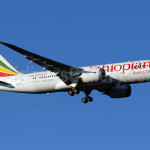

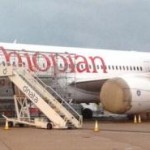

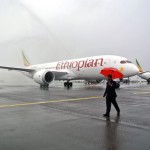
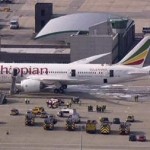



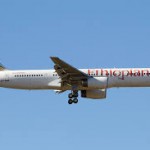













Join Conversations